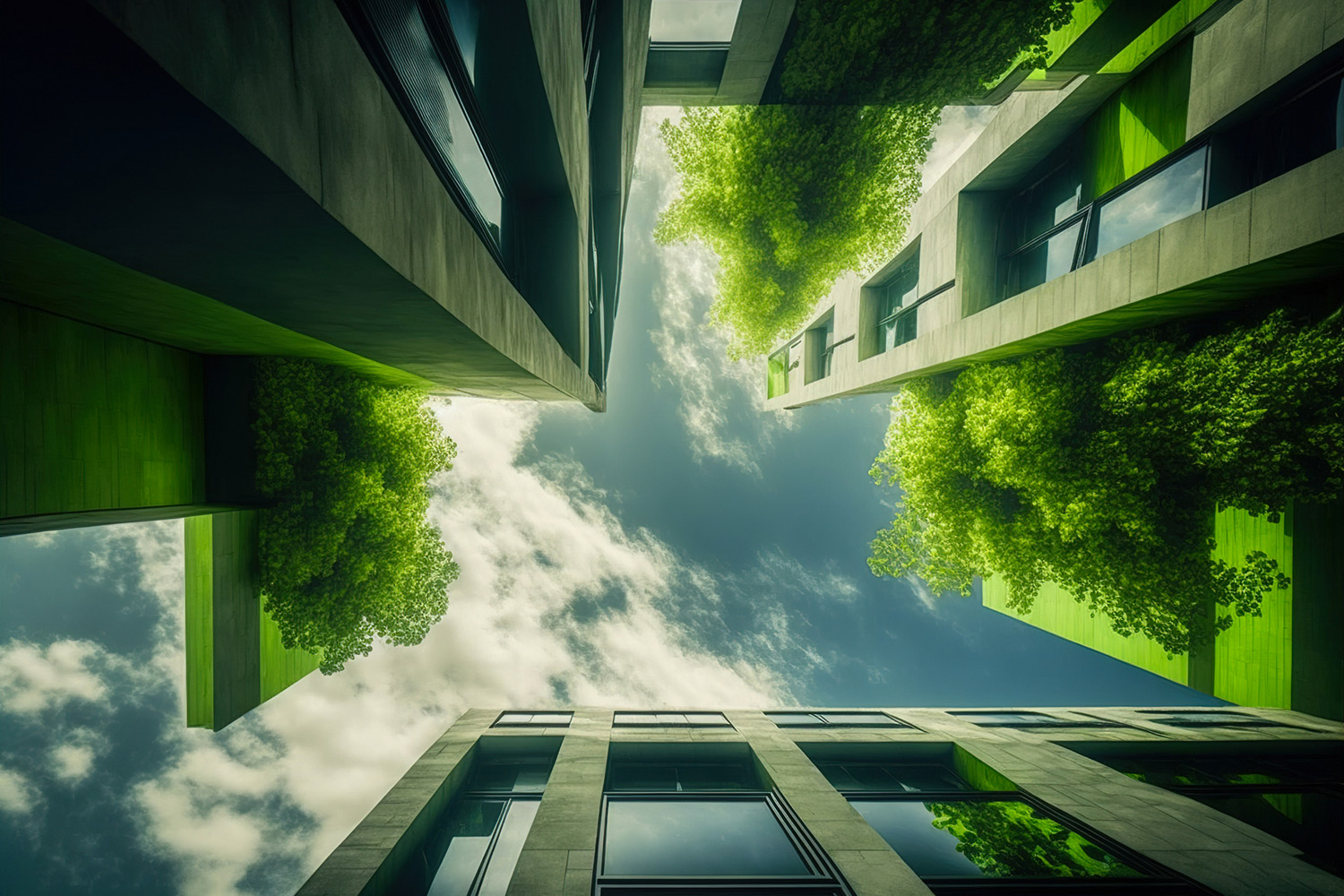Recently, there has been increasing talk of green building and sustainable architecture, redevelopment and maintenance. More and more green solutions are being sought that have a reduced environmental impact and promote people’s well-being, while ensuring a comfortable living experience and appropriate aesthetics.
However, although these terms have firmly entered common parlance, not everyone knows their meaning. For this reason, it may be helpful to highlight some criteria that can help to define a building as sustainable.
Continue reading and discover the characteristics of a building designed according to green building criteria.
What is a sustainable building
The concept of sustainable building dates back to 1987 with the World Commission on Environment and Development’s Report on Sustainability in the Building Sector, which is considered one of the three highest-emissive sectors along with transport and livestock.
This need for innovation, which has peaked in recent years in the wake of the climate emergency, has created the conditions for defining a set of key criteria for sustainable building. Three crucial considerations – aesthetics, function and construction – have shaped how architects and designers approach sustainable building design challenges.
Let us analyse them in detail.
The aesthetic aspect
It is often believed that green building only refers to the choice of materials to be used for the efficient construction of buildings that, in reality, should be considered sustainable if they also follow specific rules of architecture, starting with form, style and beauty.
In this sense, buildings should not be disconnected from their surroundings, enhancing green areas and urban neighbourhoods. The harmony between functionality and aesthetics helps create spaces that meet current needs and stand the test of time.
Foresight
Sustainability also implies the ability to anticipate future needs. A building that wants to be sustainable must perform well in the present but must also be designed to adapt to future developments.
This design foresight is key to ensuring the durability of investments and continued efficiency in the use of resources.
Materials
Buildings of the future must take sustainability and limited resources into account. From the foundation to the structure, every component must contribute to a building that respects the surrounding environment and minimises the impact on the ecosystem.
Identikit of a sustainable building
In the large number of buildings that populate our cities, some stand out for their sustainability and have common characteristics, such as respect for the surrounding area, attention to the economic and social impact of construction, use of sustainable materials and construction techniques, and energy efficiency of the structure.
Principles of a sustainable building from design to use
The focus on the sustainability of a building runs through all phases of design and construction. The location of the building project becomes a key element, not only in terms of accessibility but as a tangible contribution to overall sustainability. A sustainable building site is not just a physical place but a harmonious ecosystem that blends organically with its surroundings.
Maximising natural resources and recycling materials throughout a building’s life cycle are key practices for sustainable resource management. The aim is to reduce pollution from the production and disposal of materials, contributing to greater efficiency and sustainability. In this way, the building becomes an integral part of the ecosystem rather than an extraneous structure imposing itself on nature.
The second cornerstone for a sustainable building is energy optimisation. Reducing the energy load is a crucial goal that requires careful design, efficient technologies, and appropriate materials. The move towards NZEB buildings for government and private projects reflects the ambition to minimise environmental impact, improve energy performance and promote independence from non-renewable resources.
After its construction
Design and construction are not the first and last steps in the life of a building. It must remain sustainable even during its use. Indoor environmental quality (IEQ) is a cornerstone. The design of spaces that maximise natural light ensures adequate ventilation and control humidity, contributing to a healthy and comfortable indoor environment.
A sustainable building must, therefore, be managed with constant care and attention. In this context, maintenance plays a key role in maintaining the building’s high environmental performance. Careful monitoring of energy, water and waste processes ensures that the building retains its efficiency and sustainability over time.
Conclusions
In conclusion, a sustainable building is not just a physical structure but the tangible manifestation of a deep commitment to the environment, energy efficiency and people’s well-being. It is a testament to the ability to design and build in harmony with nature, embracing the ecological, economic and social principles that define a more sustainable future vision.
This is the identity of a sustainable building, and we at Diasen are committed, with our products and solutions, to building in a way that is kinder to the environment and people. Discover all our building products online.

